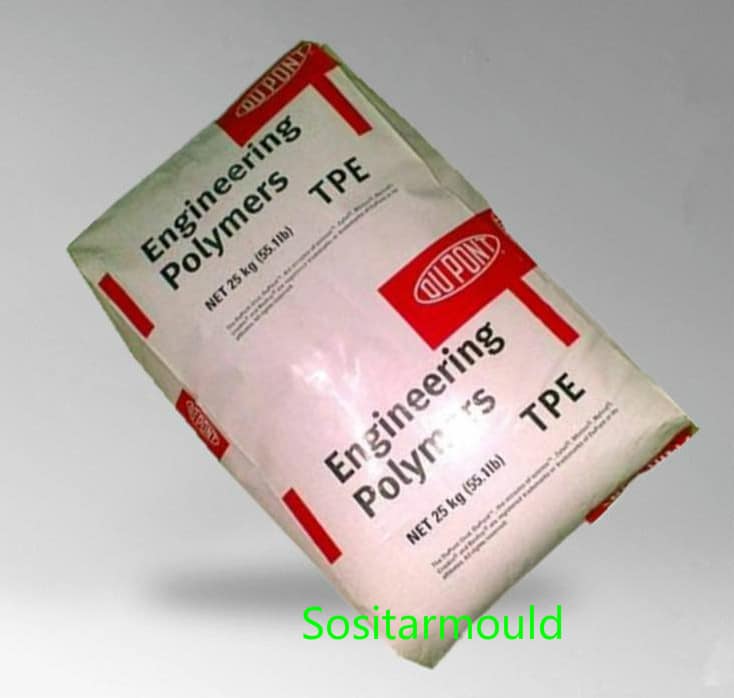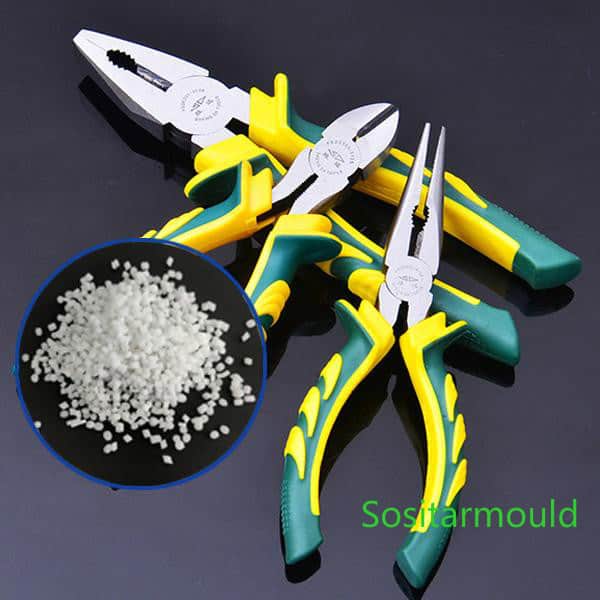I. Definition of TPE

Thermoplastic Elastomer, AKA TPE, refers to the high molecular material that has the properties of vulcanized rubber (that is, the properties of an elastomer) at normal temperatures, and is able to be plastically deformed at high temperatures. It is able to be made into products with plastic processing machines such as injection molding, extrusion molding, blow molding, calendering, T-Die extrusion molding, etc., which are faster than the processing of traditional vulcanized rubbers, while having the advantages of light weight (low density), environmental friendliness (recyclable, non-toxic combustion), long service life (up to 5 to 10 times longer than traditional rubbers), high processing variability, low total product cost, etc. It is now gaining widespread popularity in various industries. TPE is sometimes referred to as Thermoplastic Rubber (TPR), but by definition, TPE is more appropriate. TPE is an elastomer with the properties of vulcanized rubber, but vulcanization is not necessary. It is also known as thermoplastic rubber, usually abbreviated as TPR, so we usually believe that TPE and TPR are the same in broad sense, but TPE is more often used. In addition, TPE possesses many characteristics between rubber and plastic.
II. Basic Properties of Plastic and Rubber
TPE is a material that owns the properties of both the rubber (or the elastomer) and the plastic. It is composed of rubber components (i.e., soft segment) and plastic components (i.e., hard segment). The soft segment is elastic, while the hard segment plays a role as a bridging point at normal temperatures to prevent plastic deformation. However, when temperature rises, the plastic components in the hard segment will melt, lose its role as a bridging point, and become plastically deformable, e.g., when molded like a plastic.

III. Types of TPE
1. TPU (Thermoplastic Polyurethane)
TPU is mainly composed of (1) PU obtained by reacting short-chain diol with isocyanate as hard segment, and (2) PU obtained by reacting long-chain diol with isocyanate as soft segment. The linear multi-block copolymer composed of the two is TPU. TPU is mainly divided into two series according to the polyalcohol in its soft segment: polyether series and polyester series, which can be further divided into PTMG, PEG (polyoxyethylene glycol), PPG (polyoxypropylene glycol), ADP (Adipic ester system), PCL (caprolacton system), PC (polycarbonate system), etc.
In terms of performance and processing, TPU mainly shows the following features:
Advantages:
* The most abrasion resistant among all types of TPEs
* High strength, high toughness and high transparency
* Great resistance to fatigue, cold and oil
* Environmentally friendly, non-toxic and recyclable, able to be used for medical devices
Disadvantages:
☆ Average heat resistance
☆ Insufficient weather (UV) resistance (but UV stabilizers can be added)
☆ High residual stress of the finished product, and prone to mold sticking
2. TPO (Thermoplastic Polyolefin)
The hard segment of TPO is polyolefin such as PP or PE, while the soft segment is rubber such as EPDM (Ethylene Propylene Diene Monomer). TPO is able to be obtained by well mixing the two. Since the difference between TPO and the soft or hard polyene is not obvious, it is difficult to define TPO properly. However, it usually refers to the polyene with a rubber content of 20% and a flexural modulus of 690 MPa or less. TPO usually refers to the simple physical mixing of polyene and rubber, so that the rubber is dispersed in the polyene group in the form of fine particles. The rubber particles used at this time may be unvulcanized or partially vulcanized. If you use partially vulcanized rubber, the properties of TPO will be better, but if the degree of vulcanization is too high, the dispersion in the polyene will deteriorate, which will reduce the performance of TPO, so rubber vulcanization should be carefully controlled. If TPO is made via vulcanization reaction of rubber during the blending process, it is then referred to as TPV (Thermoplastic Vulcanizate). Another type of TPO is obtained by covalently polymerizing the hard and the soft segments directly in a polymerization reactor. This type of TPO is polymerized with a metallocene catalyst, so it is also known as M-POE. As it doesn’t require blending and is easier to control the degree of polymerization and grafting rate, it is more competitive than traditional TPO in either performance or price.
In terms of performance and processing, TPO mainly shows the following features:
Advantages:
* Lowest specific gravity and low price
* Cold / heat / acid / alkali resistant (second only to TPEE)
* Excellent weather / ozone resistance, and electrical insulation
* Great processability, and allowing for easy molding of large-sized products
Disadvantages:
☆ Easily eroded by non-polar solvents, such as gasoline and aromatic solvents
☆ Low tensile strength (can be enhanced with filler)
☆ Large compression set
☆ Poor wear resistance and tensile resilience
3. TPV (Thermoplastic Vulcanizate)
TPV is a TPO made by vulcanizing rubber while mixing it with a mixer, e.g., an internal mixer or a plasticator. The vulcanized rubber particles in the soft segment can be finely dispersed in the polyene group in the hard segment. TPV is available in many different types and specifications according to the different types and combinations of its hard and soft segments, but the most representative ones are the PP-EPDM series, followed by PP-NBR, PP-ACM, PP-NR, PP-IIR, PE-EPDM, PE-NR, PA-NBR, PA-ACM and PVC-NBR, among others. The vulcanizing agent used for the PP-EPDM series is a phenol resin, while the accelerator is tin dichloride, i.e., resin bridging, forming bridged EPDM particles (soft segment) with a diameter of several μm, dispersed in PP substrate (hard segment). The finer the rubber particle, the greater the tensile strength and elongation at break; the larger the amount of PP, the greater the hardness, elasticity and elongation.
In terms of performance and processing, TPV mainly shows the following features:
Advantages:
* The compression set is the lowest among TPEs
* Mechanical properties are better than those of TPO, and hardness is lower than that of TPO
* Great resistance to oil, weather and heat
* Environmentally friendly, non-toxic, recyclable, and able to be used for medical devices
Disadvantages:
☆ Abrasion resistance is worse than that of rubber and TPU
☆ The price is much higher than that of TPO
☆ Average processability, and sometimes the surface is prone to flow marks
☆ Non-transparent
